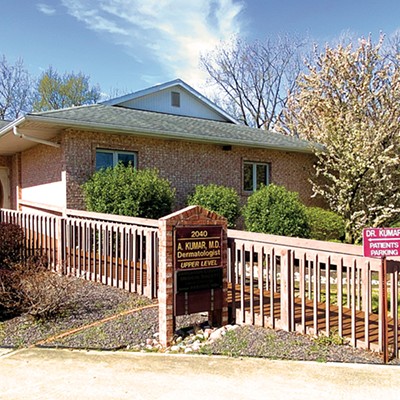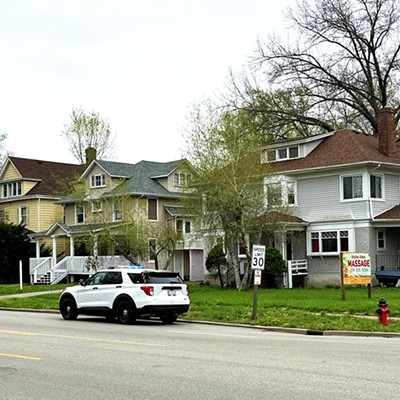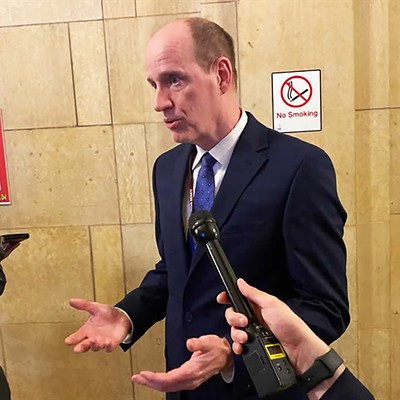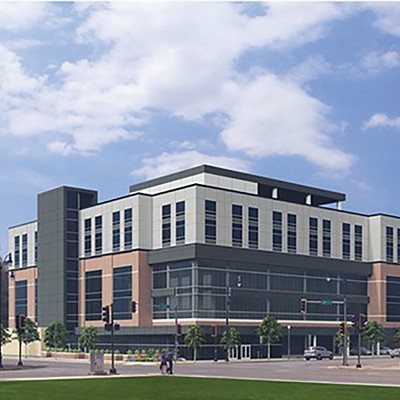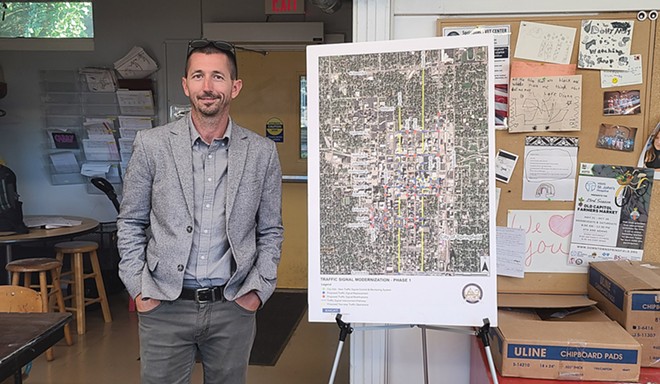
The conversion to mostly one-way streets in downtown Springfield, intended to relieve traffic congestion, began in 1949 and continued for 20 years.
But that transportation plan in the present day – promoting rapid travel in and out of downtown amid current efforts to make downtown a more vibrant place to shop, gather and live – is expected to change a bit in late 2023.
That's when two major downtown thoroughfares – Fourth Street from South Grand Avenue to Dodge Street, and Adams Street from Sixth Street to Ninth Street – will permanently change from one-way to two-way.
Converting additional one-way streets to two-way will be considered after railroad traffic is transferred from the Third Street to the 10th Street corridor in late 2025, according to T.J. Heavisides, Springfield's traffic engineer.
The changes will dovetail with a planned computer software upgrade to better coordinate downtown traffic signals so drivers encounter fewer successive red lights, he said.
"It was a good time to do it because we're upgrading the signals," Heavisides said.
The entire project will be coordinated by Springfield-based Egizii Electric, which was awarded a $4.6 million contract by the City Council in August.
Work on improvements for about 70 traffic signals downtown could begin late this year or early in 2023, depending on a delivery schedule for new equipment that sometimes lags because of supply-chain issues related to the COVID-19 pandemic, Heavisides said. The equipment will include some additional traffic signals for handling two-way traffic.
The project will take about a year, and two-way traffic flow will begin after the signal coordination improvements are complete, he said.
The directional conversions were driven by inquiries from the public, including groups representing downtown interests, Heavisides said. Studies in other parts of the country have found that two-way streets promote economic activity by making businesses "a little more accessible from different areas of town," he said.
"The one-way traffic is good for the efficiency and the flow of traffic in or out, but it has its downsides as far as being able to navigate the downtown, and a lot of people have noticed," Heavisides said.
Having to make additional turns to reach a business is known as "adverse travel," and so businesses like to be based on streets that are easily accessible, he said.
A traffic study conducted for the city by Knight EIA Inc. in the late 2010s recommended converting parts of Fourth, Adams and Seventh streets to two-way, he said. The Seventh Street option is on hold, and a conversion for part of Washington Street also will be studied in the future, he said.
It would be cost-prohibitive to make certain streets that cross the current Third Street tracks two-way because additional mast arms would have to be installed to prevent car-train collisions, he said. Those arms would be needed only until train traffic is rerouted to 10th Street.
Angled parking on the south side of Adams – currently head-in spots on the westbound-only street – would remain. But after the change, eastbound cars would back into a space, Heavisides said.
Traffic signal coordination downtown has deteriorated in recent years because the computer software controlling the system stopped functioning, and fixes no longer are available because of the software's age, he said.
Drivers especially notice this problem on one-way streets such as Lawrence Avenue and Cook Street, he said.
"You're used to coming and getting the green lights in succession, when all of a sudden you notice you may get stopped at one of those lights, and you look and see all of the other lights are green, but this one's not," he said.
City employees can and do make manual, temporary fixes in the signals' internal clocks. "But without having an automated system, the efficiency really lags," Heavisides said.
On-street parking on the east side of Fourth Street, between Union and Dodge streets in the Enos Park neighborhood, will be prohibited after Fourth Street becomes two-way. That's because the street on that block is too narrow to safely accommodate traffic after the road is striped, he said.
Plans call for Fourth Street eventually to become two-way from Dodge north to North Grand Avenue sometime after the Third Street rail line crossing Fourth just north of Dodge is removed.
Decisions haven't been made on whether parking on both sides of Fourth north of Dodge will be affected, Heavisides said, noting that Fourth Street north of North Grand Avenue is a two-way street.
A few months ago, the city eliminated parking on both sides of Fourth between Carpenter and Union after patrons of the downtown YMCA voiced concerns about pedestrian visibility when crossing Fourth Street to reach the Y's satellite parking lot. The elimination of parked cars also improved visibility for cars as they exited the Y's main parking lot, Heavisides said.
The city previously planned to eventually eliminate parking on that segment of Fourth Street when separate turn lanes are installed as part of the conversion to two-way traffic, he said.
Betsy Dollar, executive director of the Springfield Art Association, 700 N. Fourth, said she didn't think Fourth Street needed to be made two-way north of Carpenter.
The elimination of parking on the east side of Fourth, in front of the association's building, will create a shortage of close parking spaces for patrons attending major events at the center, she said.
"Everyone's going to have to be retrained," she said. "There will be an adjustment period."
Ward 5 Ald. Lakeisha Purchase, who was appointed to the council in September 2021 to fill a vacancy, said her goal has been to educate neighborhood residents on the traffic changes that are coming.
"People do not adapt to change right away," she said.
Dean Olsen is a senior staff writer for Illinois Times. He can be reached at [email protected], 217-679-7810 or twitter.com/DeanOlsenIT.



